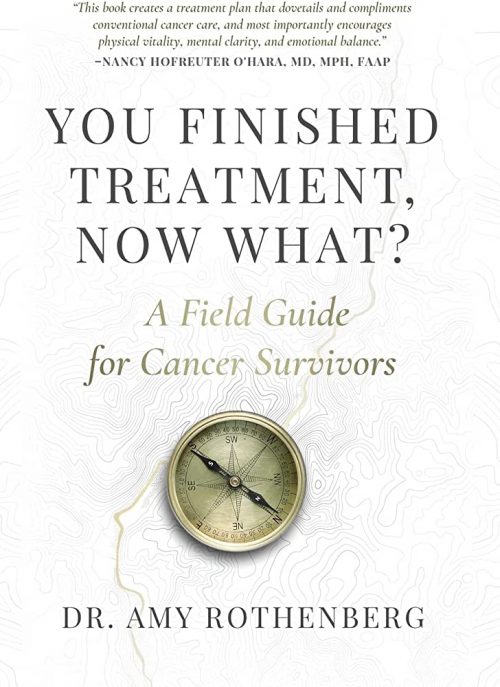Personalized cDNA surveillance for patients with high-risk breast cancer
Is there a more sensitive technology that can detect preclinical breast cancer progression?
It is now possible to monitor fragments of cell free tumor DNA (ctDNA) circulating in the blood. This falls under the umbrella of “liquid biopsies” which monitor tumor burden, tumor response to treatment and early signs of recurrence or progression without a scan or need for a new surgical or biopsy tissue sample.
- “Up to 30% of patients with breast cancer relapse after primary treatment.
- There are no sensitive and reliable tests to monitor these patients and detect distant metastases before overt recurrence.
- Breast cancer cell free tumor DNA blood test (liquid biopsy) can detect recurrence up to 2 years earlier than currently available conventional serum tumor markers and radiologic studies.
- Cell free tumor DNA assays predict breast cancer recurrence earlier and with greater accuracy than traditional tools by using a highly-personalized molecular residual disease assay.
A cell free tumor DNA (ctDNA) assay is a personalized, tumor-informed assay with the power to give you earlier, clearer insight into your patient's disease. By detecting and quantifying ctDNA, you can optimize your ability to assess risk, predict recurrence, and monitor treatment response in those most at risk for progression.
This technology can be used to monitor a wide range of cancers. While this type of monitoring has not yet been widely adopted as “standard of care” I encourage you to educate all of your patients and their care providers to adopt the use of this highly reliable screening tool now.
Here, we demonstrate the use of personalized circulating tumor DNA (ctDNA) profiling for detection of recurrence in breast cancer.”
Cell free tumor DNA assays use a sample of the patient’s tumor tissue to develop a unique DNA fingerprint. After that, follow-up blood draws capture changes in the level of ctDNA, giving clinicians a better picture of a patient’s risk of recurrence without the need for another tissue sample and may decrease the need for frequent scans and repeated frequency of exposure to radiation and contrast material.

A recent study “demonstrates that patient specific ctDNA analysis can be a sensitive and specific approach for disease surveillance for patients with breast cancer. More importantly, earlier detection of up to 2 years provides a possible window for therapeutic intervention. “(1)
Currently, there are no sensitive and specific clinical tests available to follow patients with breast cancer after primary treatment. Signatera developed a patient-specific method to analyze circulating tumor DNA (ctDNA) that allows for monitoring of these patients regardless of molecular genotype. In this study, we analyzed 208 blood samples from 49 patients monitored longitudinally for up to 4 years after completion of adjuvant chemotherapy to determine whether personalized ctDNA assays can allow for more effective monitoring than current clinical tests such as CA 15-3. Remarkably, for the patients that recurred, our test detected molecular relapse up to 2 years ahead of clinical relapse (median, 8.9 months) with 89% sensitivity and 100% specificity. This may provide a critical window of opportunity for additional therapeutic intervention.” (1)

Data from a retrospective cohort analysis of EBLIS, a study designed to determine the lead interval between ctDNA detection and clinical metastatic disease, and to determine whether ctDNA in plasma can detect recurrent disease earlier than traditional methods, demonstrated that Signatera can accurately predicts metastatic relapse with a significant lead time over imaging and CA 15-3 (200 days on average)
Neoadjuvant
“…our study shows promise that early response prediction by highly sensitive ctDNA analysis in high-risk early breast cancer patients may facilitate a timely and judicious change in treatment to improve patients’ chances of achieving favorable long-term outcomes.(2)
Surveillance
Patients undergoing treatment as well as those who have completed their course of treatment can be assessed both for response to treatment during a course of therapy as well as for early signs of reurrence after treatment has been completed. In a study of patients undergoing treatment with Pembrolizumab, a checkpoint inhibitor.
“Baseline ctDNA concentration correlated with progression-free survival, overall survival, clinical response and clinical benefit. This association became stronger when considering ctDNA kinetics during treatment. All 12 patients with ctDNA clearance during treatment were alive with median 25 months follow up. This study demonstrates the potential for broad clinical utility of ctDNA-based surveillance in patients treated with ICB.” (3)
Recommended labs offering this technology include Natera, INVITAE, Foundation One, Caris Life Sciences. All of these labs are highly regarded in the oncology community. (Disclosure: I have no financial relationships with any of the labs recommended in this article.)
How often should these assays be performed?
I recommend monitoring monthly during active treatment to determine if the current treatment is effective and continuing to be effective. This is a way to identify treatment resistance early.
 I recommend monitoring every three months during the first two years after completing treatment or for patients with advanced receiving ongoing treatments. (For example advanced breast cancer patients receiving hormonal treatments, immunotherapy treatments, checkpoint inhibitor treatments or chemotherapy treatments over long periods of time.)
I recommend monitoring every three months during the first two years after completing treatment or for patients with advanced receiving ongoing treatments. (For example advanced breast cancer patients receiving hormonal treatments, immunotherapy treatments, checkpoint inhibitor treatments or chemotherapy treatments over long periods of time.)
For long term survivors I recommend monitoring every 6 months until the 10 year No Evidence of Disease anniversary.
This is the same schedule of monitoring that we use in the OUTSMART CANCER® System to follow measurable biomarkers in the tumor microenvironment.
Discover how you can join
Foundations of Integrative Oncology Professional Online Training
Master the OUTSMART CANCER® System
Receive Monthly Live Mentoring and Case Supervision
from Dr. Nalini Chilkov
CLICK HERE
References
- Coombes C, Page K, Salari R, et al. Personalized Detection of Circulating Tumor DNA Antedates Breast Cancer Metastatic Recurrence. Clinical Cancer Research. 2019;25(14):4255-4263.
- Circulating tumor DNA in neoadjuvant-treated breast cancer reflects response and survival M. J. M. Magbanua. https://doi.org/10.1016/j.annonc.2020.11.007
- Bratman, S.V., Yang, S.Y.C., Iafolla, M.A.J. et al. Personalized circulating tumor DNA analysis as a predictive biomarker in solid tumor patients treated with pembrolizumab. Nat Cancer 1, 873–881 (2020). https://doi.org/10.1038/s43018-020-0096-5
- https://www.natera.com/info/know-breast-cancer/?utm_source=cancer-therapy-advisor&utm_medium=email&utm_campaign=breast-cancer-launch











